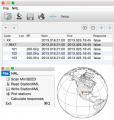
Overview
Regardless of the type of datalogger and sensor, the one constant they all need is power.
Batteries
Because of the relative isolation of seismic stations the most common power source is a battery. Batteries come in two main types: primary and secondary. Secondary batteries are rechargable and primary batteries are used once then discarded.
Most experiments that utilize dataloggers will use deep cycle lead-acid batteries. The size and capacity of the lead-acid battery will vary with datalogger type, sensor type, telemetry, solar panel size, and geographic location.
At least 3 months before a long-term experiment is scheduled to go in the field, you should consult with EPIC personnel to discuss the power requirements for your experiment.








